Welcome to our Forward Prizes 2025 ’How I Did It’ series. This year we asked poets shortlisted for the Jerwood Prize for Best First Collection to write about the inspiration behind one of the poems from their chosen collection. Here’s Sarah Ghazal Ali on what inspired her to write the poem ‘Magdalene Diptych’ in Theophanies.
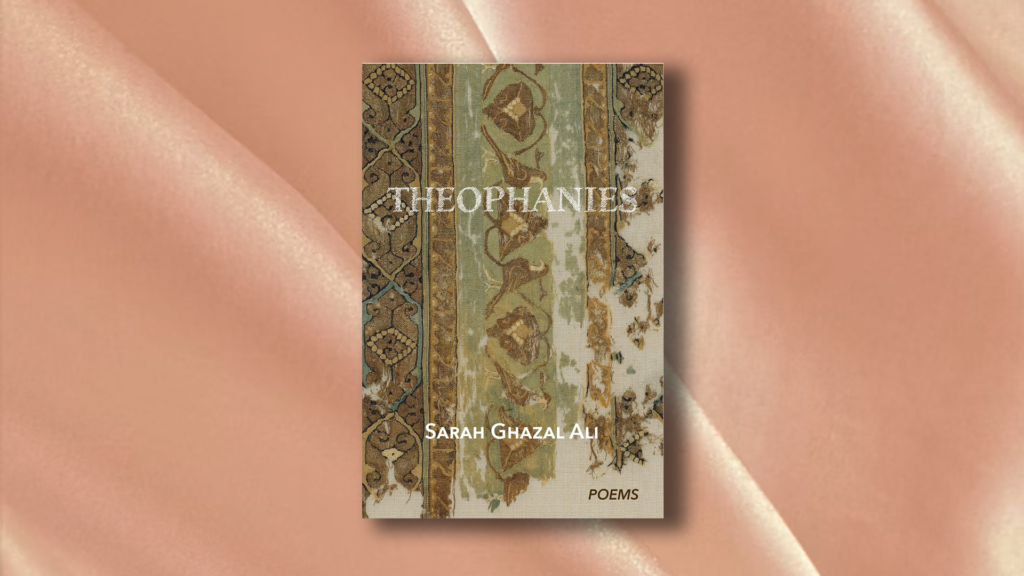
Magdalene at a Mirror
In the seventeenth century, French Baroque artist George de la Tour painted a number of strikingly similar paintings that place Mary Magdalene before a mirror in a dark room. In each, she appears somewhat in profile, bedraggled and contemplative. I first encountered one iteration of this painting (titled Magdalene at a Mirror, or, The Repentant Magdalene) while planning a visit to the National Gallery of Art, where the painting is held, but not on display. Even looking at it through a screen, I admired the chiaroscuro, the way Mary Magdalene’s face is lit only by the bright flame of a candle – and the candle itself, the primary source of light, is almost entirely obscured by the presence of a skull on the table.
The painting conjured doubles and duplicates: the added context in Mary Magdalene’s name to differentiate her from the Virgin Mary, the skull on the table reflected in the small mirror. Mary Magdalene is gazing into that mirror, but from my vantage point, I do not see her reflection. I cannot see what she sees, only what the painter angles toward me.
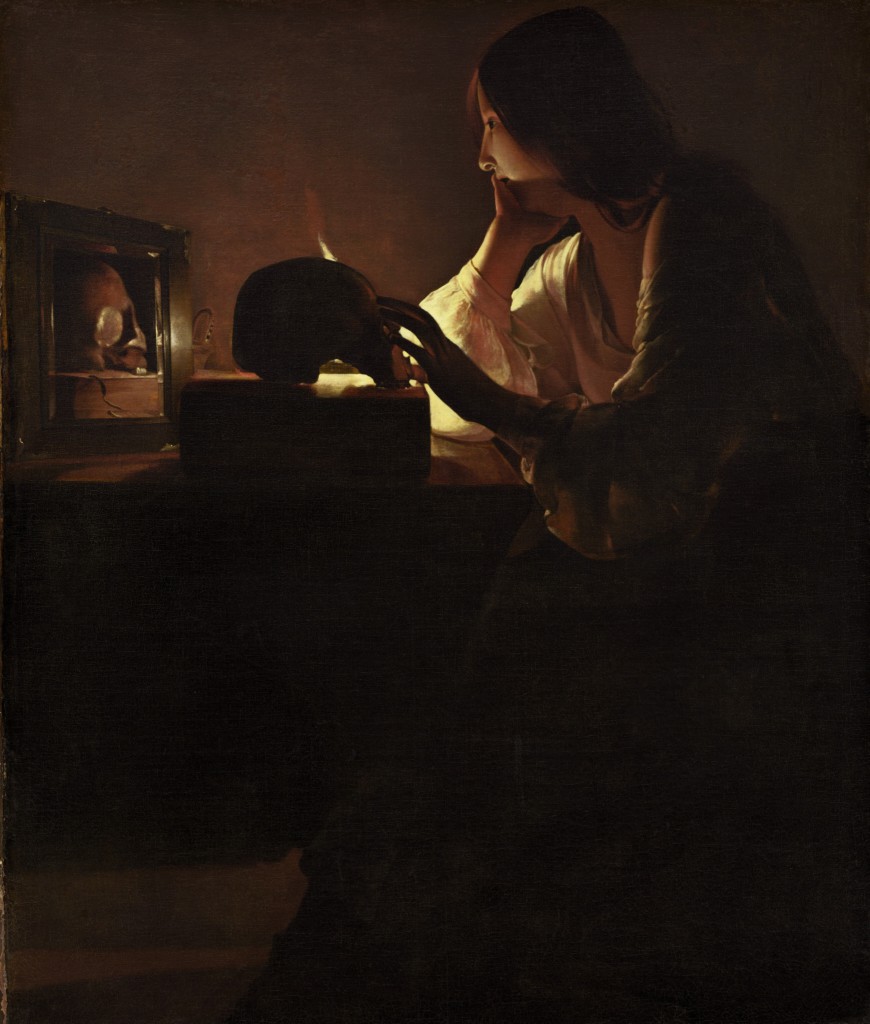
Source: National Gallery of Art
Ekphrasis, & Impending Endings
I have always been drawn to ekphrasis, to the process of writing in communion with visual art. The image is what feeds my imagination, much to my chagrin. My faith is aniconic and forbids human figures, yet I look everywhere with hungry eyes for signs, symbols, and answers. This poem began as a landscape for me to spiral deeper into my obsession with the image, its duplicities, its depths. A painting is a reproduction, a recreation of an image. It is manmade, a version of Mary Magdalene severed from time, place, and history. A painting in the Baroque tradition is colored with presuppositions about beauty, truth, faith, and awe. And I do feel awe as an onlooker. I feel in the hours spent studying her face that I am studying faith itself.
As a spectator, I come to the image with a flurry of questions. Who knew Mary Magdalene, maligned ceaselessly by men? Who knew this woman, called both penitent prostitute and Apostle of the Apostles, the one said to have knelt and dried the feet of Jesus with her hair? What version of her is most believable? Most desirable? Who can know, truly know, any woman? Certainly not me, encountering an image of her cast in oil and framed, a likeness controlled by the hand of yet another man.
John Berger in Ways of Seeing writes, ‘we never look at just one thing; we are always looking at the relation between things and ourselves.’ When I look at something, the conclusions I draw, the things I notice – they reveal more about my gaze than the object it falls upon. When I look at Mary Magdalene, seated before a mirror, I see my own aches and fears and desires. I see a woman who wants desperately to be seen and held by the divine, who looks into a mirror and sees nothing but impending endings.
The Diptych, Hinged…
To reconcile my questions and the painting’s literal inability to answer them, I began writing with one question at the top of the page to see where it would take me: What might this Mary Magdalene say if she could speak? Immediately, I honed in on my own use of the word this: this version of her, this mirage of her – a collage of all that has been said, spoken, written about her. ‘Magdalene Diptych’ began as a persona poem written in the voice of Mary Magdalene, but quickly split in two, because there was certainly more than one version of this woman in front of me.
On the left side of the page, I wrote in the voice of (one, imagined) Mary Magdalene, the historical figure in all her contradictions. On the right side of the page, I wrote in the voice of Mary Magdalene within the painting, as a created image. What would a woman aware that she is a made thing, a canvas on display, say? The diptych came to mind as a container for this duet-of-sorts, the form it would take to both mirror and amplify the visual art that the poem engages with. Christian art or iconography often takes the form of a diptych, which is a two-paneled object or altarpiece connected by a hinge. In my diptych, the two voices are hinged in their relationship to the true Mary Magdalene, who remains ultimately unknown to us. Ironically, the painting is not available to view in person and hasn’t been for many years. This lends the poem a secret urgency – if the painting speaks, it does so in a dark room that no one visits or walks through. The speaker, and any voices I’ve found in her, has been swallowed whole, indeed.
Magdalene Diptych
after George de la Tour’s Magdalene at a Mirror
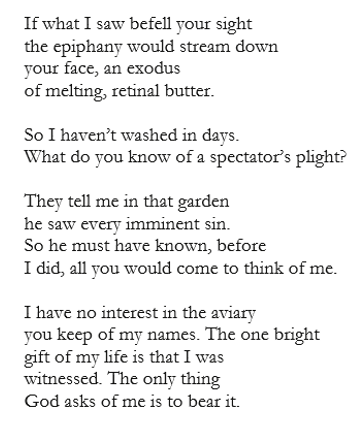
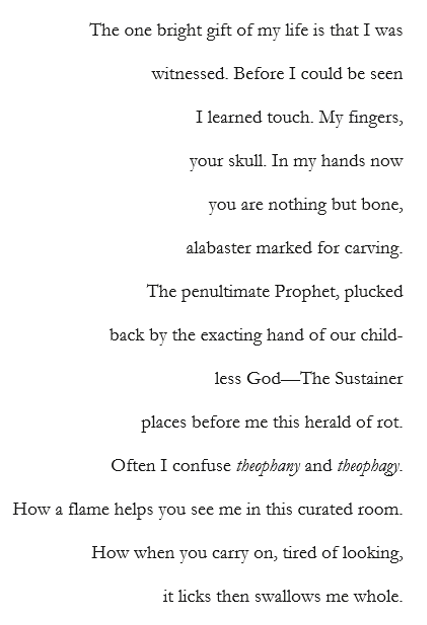
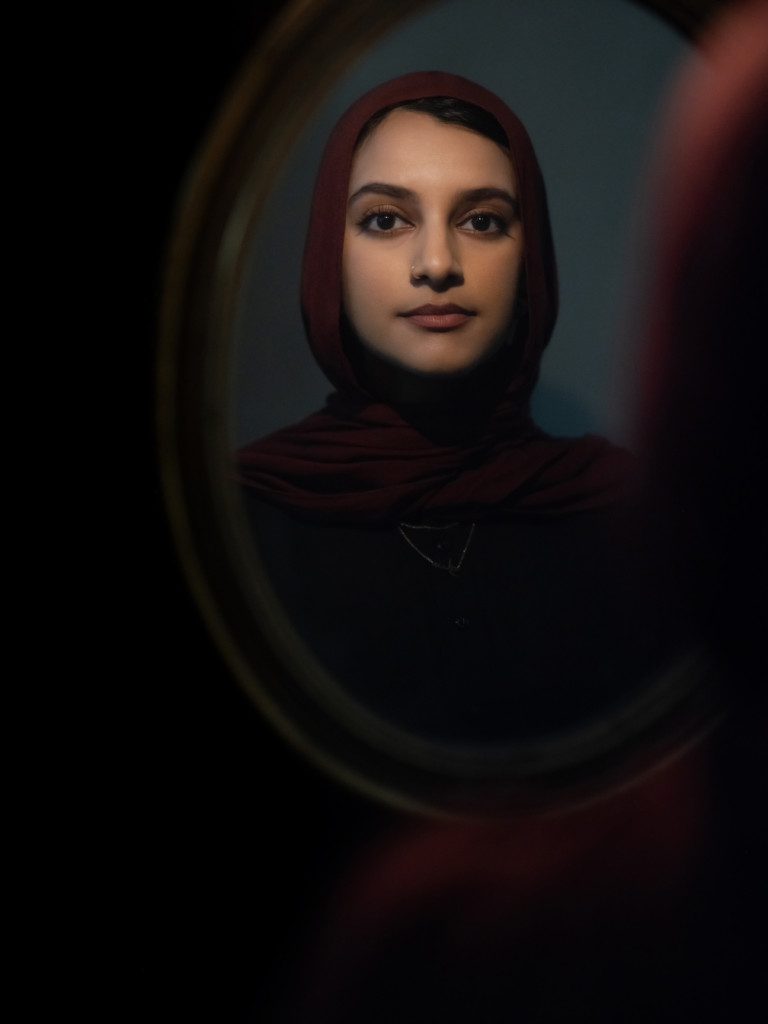
Sarah Ghazal Ali is a Pakistani American writer and editor. She is the author of the poetry collection Theophanies (the87press, 2025), winner of the GLCA New Writers Award and California Book Award and a finalist for the Jerwood Prize for Best First Collection. A Stadler and Kundiman Fellow, Sarah is the poetry editor for West Branch and an Assistant Professor of English at Macalester College. She lives and teaches in Saint Paul, Minnesota.
Add your Reply
You must be logged in to post a comment.